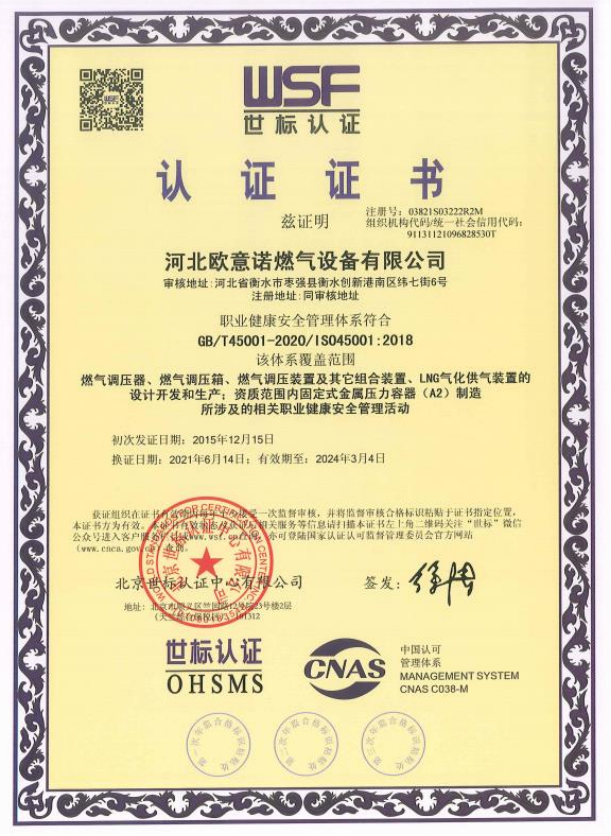
Nov . 21, 2024 23:25
Back to list
natural gas filtration
Natural Gas Filtration Ensuring Quality and Safety
Natural gas is a crucial energy source that powers homes, industries, and transportation across the globe. While it is known for being a cleaner-burning fossil fuel compared to coal and oil, the quality of natural gas must be maintained to ensure its safety and efficiency. One critical process in achieving this is natural gas filtration, which removes impurities and contaminants from the gas before it reaches consumers.
Importance of Filtration
Natural gas can contain various impurities, including water vapor, hydrogen sulfide, carbon dioxide, and solid particulates. The presence of these impurities can lead to several issues, including corrosion, environmental pollution, and reduced efficiency in combustion processes. As a result, filtration is essential to protect both infrastructure and end-users.
In natural gas processing, filtration systems serve multiple purposes. Firstly, they prevent operational disruptions in pipelines and equipment, which could lead to costly downtimes. Secondly, high-quality natural gas contributes to better engine performance in vehicles and more efficient heating in residential and commercial spaces. Lastly, proper filtration helps adhere to strict regulatory standards, reducing the environmental footprint of natural gas usage.
Types of Filtration
There are several types of filtration technologies employed in the natural gas industry, each designed to target specific contaminants
1. Coalescing Filters These are used primarily for removing water and liquid hydrocarbon contaminants. They work by merging smaller droplets of liquid into larger ones, which are then easily removed from the gas stream.
2. Activated Carbon Filters These filters are adept at removing trace amounts of organic compounds and hydrogen sulfide. The activated carbon works through adsorption, where contaminants adhere to the surface of the carbon particles.
natural gas filtration

3. Mechanical Filters Often utilized for the removal of solid particulates, mechanical filters use a physical barrier to block larger particles from passing through. These filters can be made from various materials such as mesh or paper.
4. Membrane Separation This advanced technology involves the selective permeation of natural gas through a membrane that separates contaminants based on their size and chemical properties. This method is gaining popularity due to its ability to produce high-purity gas with minimal energy loss.
5. Thermal Oxidation This process is typically employed prior to the injection of natural gas into pipelines. It combusts volatile organic compounds and some hazardous pollutants, ensuring that the gas is sufficiently cleaned before distribution.
Challenges and Innovations
Despite the advancements in natural gas filtration technology, challenges remain. As the demand for natural gas increases and new sources are developed – particularly from shale gas – the complexity of impurities continues to evolve. Emerging contaminants such as microplastics and volatile organic compounds require innovative approaches to filtration.
Research is ongoing to improve existing filtration technologies and develop new methods. For instance, nanotechnology is being explored for its potential in filtration systems to enhance adsorption capabilities and create more efficient membranes. Additionally, real-time monitoring systems are being integrated with filtration technologies to ensure consistent quality control throughout the gas processing and distribution chain.
Conclusion
Natural gas filtration plays a crucial role in ensuring the safety, efficiency, and environmental friendliness of this essential energy source. As the industry adapts to new challenges and technologies, ongoing innovations in filtration methods will help maintain the integrity and quality of natural gas, ultimately benefiting consumers and the environment alike. By investing in advanced filtration systems and monitoring technologies, the natural gas sector can continue to provide a reliable and cleaner energy alternative to meet the world’s growing energy demands.
Next:
Latest news
-
Safety Valve Spring-Loaded Design Overpressure ProtectionNewsJul.25,2025
-
Precision Voltage Regulator AC5 Accuracy Grade PerformanceNewsJul.25,2025
-
Natural Gas Pressure Regulating Skid Industrial Pipeline ApplicationsNewsJul.25,2025
-
Natural Gas Filter Stainless Steel Mesh Element DesignNewsJul.25,2025
-
Gas Pressure Regulator Valve Direct-Acting Spring-Loaded DesignNewsJul.25,2025
-
Decompression Equipment Multi-Stage Heat Exchange System DesignNewsJul.25,2025

